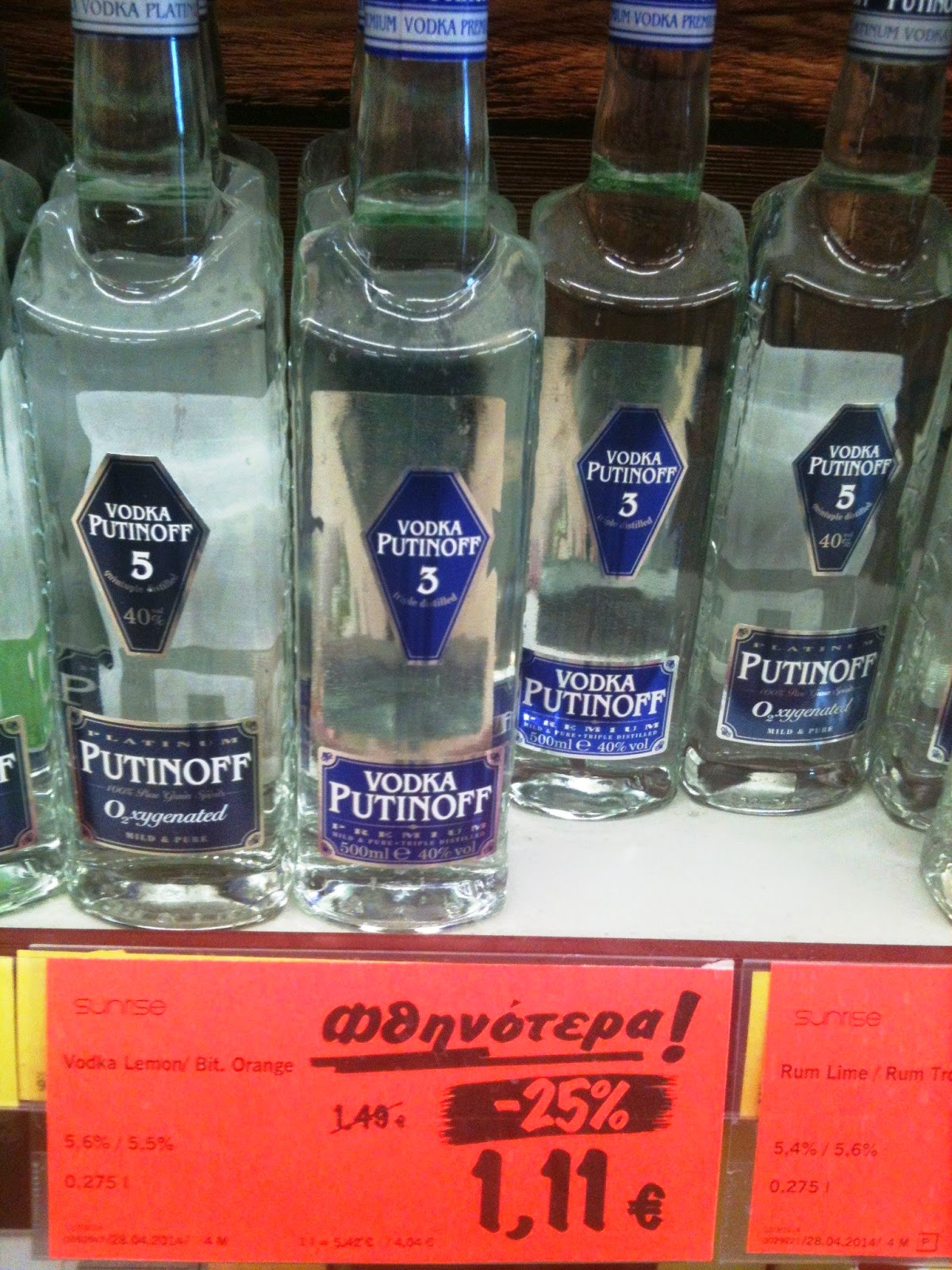 |
| Inside Kos old harbor, looking toward Turkey |
 |
| Inside Kos old harbor looking at castle |
 |
| Castle at Kos harbor entrance |
 |
| Looking back at Kos old harbor entrance with castle on left side of entrance |
 |
| New brand of Russian vodka. Putinoff We did not buy any. |
 |
| Working on clearance |
 |
| In front of Hippocrates Plane Tree |
 |
| Hippocrates Plane Tree |
 |
| Rear side of Hippocrates Plane Tree. It is eaten out almost hollow |
BTW, I read two translations of the Hippocratic Oath and it is nothing like what I had learned years ago. The oath is fairly long. The common adage of "First, do no harm" was not in either translation of the oath.
 |
| Freezing in rain on bridge into Kos castle |
Kos is an ancient island that historically was self-sufficient. The topography of this island is different from most Greek islands. It has the usual mountain but then flattens out a long distance to the west with very fertile soil. A special type of lettuce is grown here and exported to mainland Europe. Tourism is the main economy but agriculture is also good on Kos.
In 1431 the Knights of St. John began work on the fort/castle that lines the old harbor entrance. The Knights gave it up when forced out by Suleiman the Magnificent in 1522 and Kos became under Ottoman control. During World War I the Dodecanese islands were occupied by the Italians. The Italians rebuilt much of ancient Kos town and harbor, although much was damaged by an earthquake in 1933. Kos reverted to Greece after WWII and was an important military outpost. Today Kos is a very popular tourist destination with many flights arriving daily.
 |
| One of many cliffs on Kalymnos |
 |
| Another of the many cliffs |
 |
| The long fjord-like bay where we twirled all night with the wind bullets off those cliffs. |
She was right; it would provide protection for winds from all directions; however, the wind bullets off the very high sheer cliff faces on both sides of that long narrow bay caused our boat to twirl constantly. If there was that much twirling in 15 knot winds, how bad would it be in 30 knot winds!!
 |
| Look really closely and there are 12 men near the base of this cliff. Training cliff? |
I enjoyed watching rock climbers on the sheer cliff faces. I think people who do this are flat out crazy; but then, my opinion does not matter. On a small cliff face at the entrance to the long bay were a dozen men. This cliff was only maybe 100-feet high -- straight up.
 |
| Near center bottom are 2 men in red vests. They climbed to the top of that cliff. |
At the end of the long bay there were two separate couples of climbers who were working on the much higher cliff faces on the northern side of the bay. I watched a couple of them climb more than 400-feet straight up the face. Why? Why would anyone want to do this?
 |
| Yet another cliff. With caves. |
Kalymnos is the island that author Alistair Stuart MacLean wrote about in his novel 'The Guns of Navarone.' The book was made into a movie in 1961 starring Gregory Peck, David Niven and Anthony Quinn. I recently read five of MacLean's novels, including this one, and had been looking forward to visiting Kalymnos. The high sheer cliff faces did not disappoint.
 |
| This one is very hard to make out. Near bottom center is a man in white vest. The climber is in dark green vest almost to the top in this photo. These people are crazy! |
This is one of those times that the mental image formed while reading the novel matched well with the actual thing. This island has cliff faces in every direction. Glad we saw 3 sides of it.
This morning we thought about using this unusual southerly wind to head due west to Paros. After plotting a route we changed our minds. Would have arrived there at 23:00 and we do not like arriving in a strange anchorage in the dark. Instead we motored through the very narrow cut between Kalymnos and Leros (fictional Navarone and Keros), then north up the leeward side of Leros. Oh, almost forgot to mention that Kalymnos was/is the island famous worldwide for the sponge fishermen. During WWII the sponge fishermen were prohibited by the occupying Germans from doing any sponge diving. This led to starvation of the locals and many families left the island to immigrate wherever they could go. Many went to the USA and to Australia. Today, many of the old people have returned to their home island. Sponges from Kalymnos are sold by sidewalk vendors at nearby Kos.
 |
| Castle atop Leros |
According to our guide books the island of Leros has many unfortunate associations. Most of what is mentioned concerns ancient Greek mythology. Leros sided with Sparta during the Peloponnesian War; all surrounding islands were on the Athenian side. Leros saw much military activity during WWII and changed hands many times between Italians, British and Germans.
 |
| Castle on Leros. We can even see this castle from our anchorage miles away on rear side. |
Here are a few photos from recent places. Nothing to do with Kos or Kalymnos or Leros. Some are phone photos and quality is poor.
 |
| Fun water toy; guy on large yacht near us. |
 |
| Flying on water |
 |
| Doesn't this look like fun! |
 |
| Look, Ma! No hands! |






No comments:
Post a Comment
Your comment will be posted after we confirm that you are not a cyber stalker.